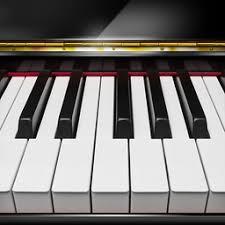SheetMusicGo Blog

Piano Music Learning: Titanic – An Eternal Story of Love
When I was in my early teens, a movie shook the world and touched hearts across continents. That film was Titanic, released in late 1997 and becoming a cultural phenomenon by 1998 in China. The theme song was everywhere. Even at the Chinese New Year Gala, it was sung in a skit by Zhao Lirong. For over a decade, it held the domestic box office record. Though I was too young to see it in theaters then, I finally watched the full movie in college. In 2012, I got to experience it in 3D with my wife, 100 years after the real Titanic’s sinking.
Uploaded by PianoH on 2025-05-02
PianoSheet MusicPiano LetterPiano notesClassical pianoSoundtrack

Piano Music Learning: A Musical Journey through Wall-E
The 2008 Pixar masterpiece Wall-E isn’t just a story about a lonely robot—it’s a beautiful blend of romance, sci-fi wonder, and unforgettable music. Set 700 years in the future, Earth is now a wasteland buried in trash. Robots were left behind to clean it up, but only one—Wall-E—remains active. Over time, he develops emotions, a sense of solitude, and eventually, love. What elevates this tale even further is its soundtrack, composed by movie music composer Thomas Newman, whose signature style has become part of many famous movie music scores.
Uploaded by PianoH on 2025-05-02
PianoSheet MusicPiano LetterSoundtrackClassical piano

Piano Music Learning: The Legend of 1900 – A Romantic Musical Poem
Uploaded by PianoH on 2025-05-02
PianoSheet MusicPiano LetterSoundtrackJazz

Piano Music Learning: Impressionist Music and Claude Debussy
By the end of the 19th century, the world of music stood at the brink of transformation. This shift wasn’t abrupt or isolated—it evolved alongside developments in economics, culture, and aesthetics, driven by a collective desire for something new. In the late Romantic period, hints of atonality and individualized emotional expression began to emerge. Melodies gained more freedom, harmonic progressions and chromaticism became more vivid, and musical forms became more flexible. Smaller-scale compositions started to display more emotional depth and subtlety. As the 20th century arrived, these traits took center stage in what is often chronologically referred to as Impressionist music, a style now essential to any comprehensive piano music learning journey.
Uploaded by PianoH on 2025-05-02
PianoSheet MusicClassical pianoPiano Letter

Piano Music Learning: An Introduction to Chord Notation
Building on our last lesson in chord structures, we now turn to a key aspect of piano music learning: chord notation. Learning to read and understand chord notation is essential for performers, arrangers, and composers alike. In this guide, we’ll explore how chords are written, interpreted, and function in music—particularly within the context of simplified sheet music, lead sheets, and harmonic analysis.
Uploaded by PianoH on 2025-05-02
PianoSheet MusicPiano LetterPiano notes

Piano Music: A Deeper Look into Chord Structures
In the last session, titled "Music Theory Lesson 5: Modes," we explored the structure of major and minor scales. However, to truly grasp piano music, we must go beyond scales—chords are fundamental elements of both harmony and musical expression. So, what exactly is a chord? How are chords classified? And how do inversions, duplications, or omissions affect them?
Uploaded by PianoH on 2025-05-02
PianoSheet MusicPiano LetterPiano notes

Piano Music: Understanding Modes in Music Theory
In our last discussion, we explored how transposition follows the rule “major to major, minor to minor.” But what defines a major or minor key? How do they relate to one another? And how can we tell whether a piece of piano music is written in a major or minor mode?
Uploaded by PianoH on 2025-05-02
PianoSheet MusicPiano LetterPiano notes

Piano Music Theory: A Guide to Transposition
In our previous discussion, we examined how different keys and key signatures relate to one another (refer to "Piano Music Theory Lesson 3: Keys and Key Signatures"). But why are there so many keys in the first place? What motivates composers to write in different keys? And what exactly occurs when a piece is transposed?
Uploaded by PianoH on 2025-05-02
PianoSheet MusicPiano LetterPiano notes

Music Theory: Understanding Key Signatures and Tonality
In our last lesson, we explored the Circle of Fifths and learned that there are twelve major and twelve minor keys, each defined by a unique key signature. For many students, memorizing these can be challenging. Is there a shortcut to help remember all the major and minor keys? And how are these key signatures connected?
Uploaded by PianoH on 2025-05-02
PianoSheet MusicPiano LetterPiano notes

Comprehensive Guide to Piano Basics for Beginners
Piano education is both crucial and challenging. The quality and professionalism of your initial learning will greatly influence how far and fast you progress in the future. Developing a solid foundation in posture, rhythm, piano note reading, and Piano Hand Shape will set the stage for long-term success.
Uploaded by PianoH on 2025-05-02
PianoSheet MusicPiano LetterPiano notes